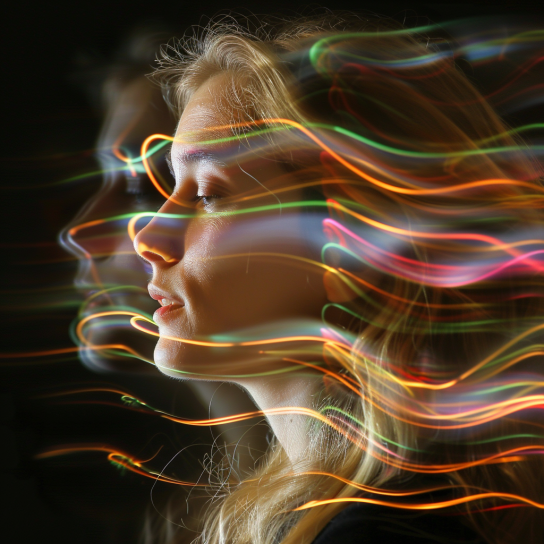Sound pressure refers to the physical loudness of a sound, while loudness refers to the perceived loudness of a sound. The interaction between frequency and sound pressure determines loudness, which is closely related to human hearing characteristics. Understanding how loudness changes with frequency can help advance acoustic technology and create better acoustic environments.
In physical terms, sound has a sound pressure and a frequency. Specifically, sound pressure is the loudness of a sound in the physical sense, expressed as pressure per unit area. Loudness, on the other hand, is how loud a sound is perceived by humans. When we say that a sound sounds small or loud, we’re talking about loudness. However, loudness, or the size of a sound as perceived by humans, can vary depending on the relationship between sound pressure and frequency.
If two sound sources at the same distance sound differently loud, people usually assume that the louder sound source has more sound pressure. However, this is not always the case. When we hear a sound, the cilia cells in our cochlea respond, and this response is transmitted to the brain, where we perceive the sound. However, these cilia cells respond differently to different frequencies, being sensitive to some frequencies and insensitive to others. This is why humans can perceive the loudness of a sound not only in terms of sound pressure, but also in terms of frequency.
Human hearing also changes with age. Young children can hear a wider range of frequencies, but as they get older, they lose hearing in the higher frequency bands. This is related to the degeneration of ciliary cells, with progressive high-frequency hearing loss occurring especially after the age of 20. This change in hearing affects everyday life, including listening to music and communicating.

The human ear has an irregular response to frequency. For example, it is more sensitive to sounds between 1,000 and 5,000 Hz compared to other frequency bands. However, it is less sensitive to frequencies below and above that. It is also known that humans cannot hear pitches below about 16 Hz and above 20,000 Hz. The isoacoustic sensitivity curve is a typical representation of this human hearing characteristic.
The isoacoustic sensitivity curve shows that even though some tones have the same sound pressure, they are perceived differently depending on their frequency. In acoustic terms, it plots the magnitude of sound pressure at each frequency that is perceived to be the same magnitude as a pure tone at 1,000 Hz. For example, this curve shows that the loudness of a 1,000 Hz pure tone at 30 dB is perceived to be the same as the loudness of a 125 Hz pure tone at 40 dB, and a 4,000 Hz pure tone at 25 dB. If all three of the above tones have a sound pressure of 30 dB, the 4,000 Hz tone will be the loudest.
Because of these hearing characteristics, when you’re listening to one sound, it can be hard to hear the others. You may have experienced that you can’t hear the person you’re talking to if there’s a lot of noise around you. This is called masking, where one sound (your interlocutor’s voice) is masked by another sound (ambient noise). The simplest example of masking is when you can’t hear pure tone B within a certain frequency range when pure tone A is present. The range of inaudible sounds that are masked can vary depending on the sound pressure and frequency of the two sounds. In general, increasing the sound pressure of the masking sound increases the range that is masked. Also, masking tends to work better when the two tones are pure tones with frequencies close to each other.
This auditory phenomenon also plays an important role in a variety of real-world applications. For example, technology is sometimes used to amplify high-frequency bands to make speech clearer in noisy public places. This masking effect can also be used in music production to emphasize the sound of certain instruments or reduce background noise. Furthermore, hearing aids made to compensate for hearing loss are designed to take into account the user’s hearing sensitivity in specific frequency bands.
Understanding acoustics also influences the design and placement of acoustic devices. For example, the placement of speakers is determined by considering the acoustic characteristics of the room and the location of the listener. This is done to optimize sound reflection and absorption in specific frequency bands, resulting in clearer, more balanced sound.
Acoustic design is also very important in venues like movie theaters and performance halls. In these spaces, the placement of speakers and sound absorbers, as well as the structural design, is done to ensure that every audience member experiences optimal acoustics. Acoustic designers work to minimize acoustic variations based on the location of the audience and ensure that sound is transmitted evenly across all frequency bands.
Collectively, the complex interplay between the physical properties of acoustics and human hearing has a profound impact on the quality and understanding of the sounds we experience every day. Armed with this knowledge, we can create better acoustic environments and advance acoustic technology. Advances in acoustics will revolutionize not only the transmission of sound, but also music and art. The study and understanding of acoustics will continue to grow in importance in the future.
